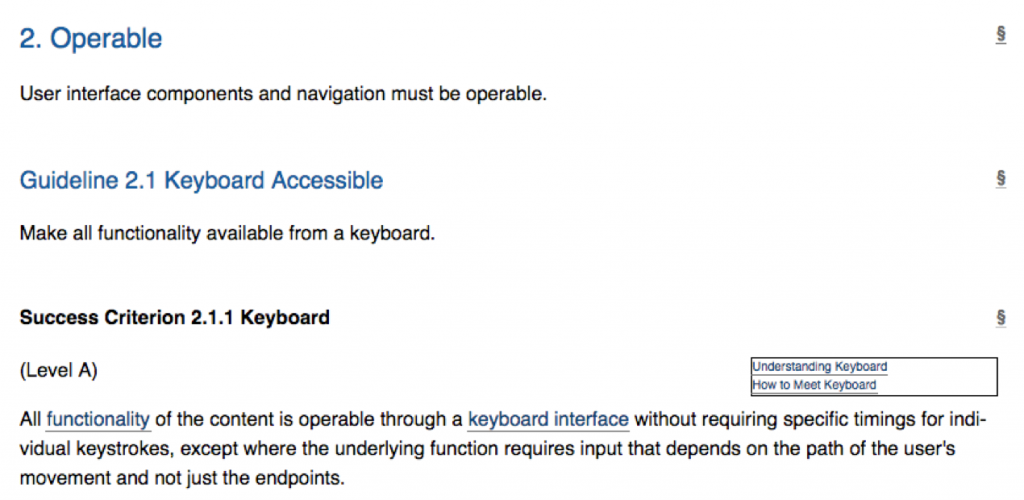About WCAG
WCAG Guidelines and Success Criteria
There are 13 guidelines in WCAG 2.1 (e.g., Guideline 1.1), containing a total of 78 success criteria (e.g., Success Criterion 1.1.1), that represent basic goals web authors and developers should aim for. Compared with WCAG 2.0, WCAG 2.1 adds one additional guideline (2.5) and 17 additional success criteria. Guidelines provide a framework for organizing success criteria.
Examining a guideline below from WCAG 2.1, you can see the principle listed first (2. Operable), followed by a guideline associated with that principle (Guideline 2.1 Keyboard Accessible), followed by a success criterion associated with the guideline (Success Criterion 2.1.1 Keyboard).

Note: The guidelines themselves are not meant to be testable. Success criteria are testable. You may also notice that success criteria are technology-neutral. That is, they are not specific to HTML, JavaScript, Flash, or any other web technology. Instead, these technology-specific references are found in the Sufficient and Advisory Techniques, described on the next page. These techniques can be found by following the “How to Meet” link to the right of each success criterion. Additional information about the guideline can be found by following the “Understanding” link.
Normative vs. Informative
WCAG documents are classified as either “normative” or “informative.” Guidelines and success criteria are normative. That is, they are required for conformance. Elements of WCAG that are normative are also stable and do not change until at least a new version of the guidelines is released. For example, the guidelines and success criteria in WCAG 2.1 will not change until WCAG 3.0 (or whatever version number it is assigned) is released.
On the other hand, the Understanding and Techniques documents are “informative” (also known as “non-normative”), which means they are not required for conformance. These documents are evolving and change as new information and new techniques become available in between releases of stable, normative, specification documents.

